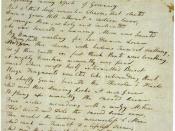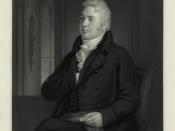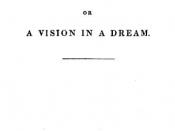Imaginative journeys are as important as any other journey in their potential to teach. Journeys act as a catalyst for self knowledge - helping all to achieve a state of appreciation for one's own potential as a person. Imaginative journeys broaden ones understanding of oneself and the world. All journeys have their limits; in this case it is the imagination. Imagination is the mental capacity for experiencing, constructing, or manipulating mental imagery. Coleridge, through the use of poetry, explores the notion of imaginative journeys. 'This Lime Tree bower my Prison' and 'The Rime of the Ancient Mariner' demonstrate how imagination can teach or cause someone to experience a lesson through the use of imagination. Coleridge's poem 'Kubla Khan' and 'The Hobbit' by J.R.R. Tolkien suggest how imagination can be used to construct or reconstruct an event that has happened or is yet to happen. The stimulus book excerpt from 'The Town where Time Stands Still' by Shirley Geok-lin Lim and 'Frost at Midnight' demonstrate how the environment can stimulate or manipulate mental imagery.
Coleridge in his conversational poem 'This Lime Tree Bower my Prison' uses his consciousness as an opening for exploring the journey that his friends had departed on without him. In this poem Coleridge is able to vicariously experience his friends' journey by the use of imagination. One can tell that Coleridge had been on that particular walk or journey before through his description of the dell:
"Wander in gladness, and wind down, perchance,
To that still roaring dell, of which I told..."
In doing this Coleridge demonstrates his knowledge of the path and the sights and challenges that one would experience on such a path. Through his memory he is able to vicariously experience an imagined version of the journey that his friends...


